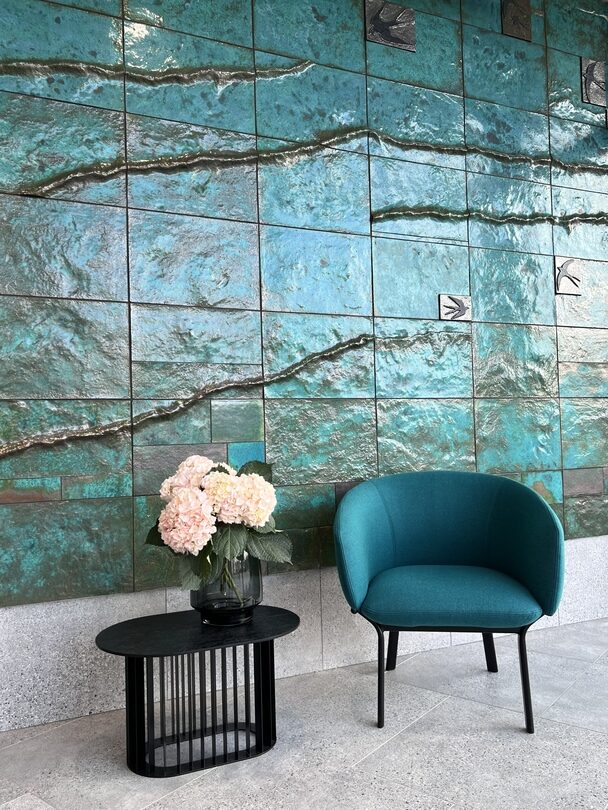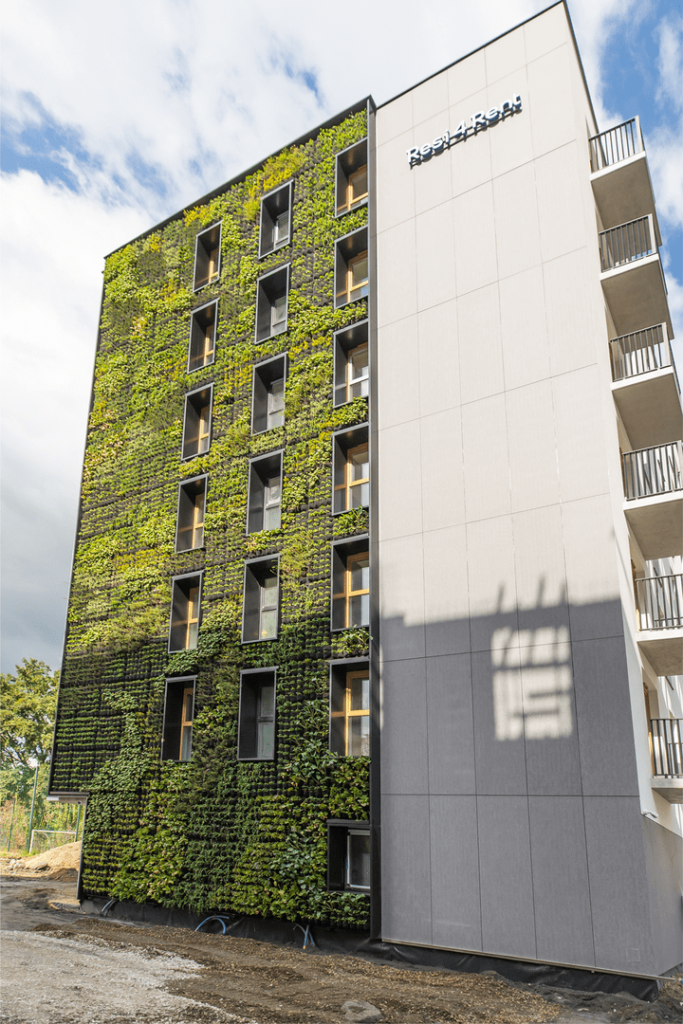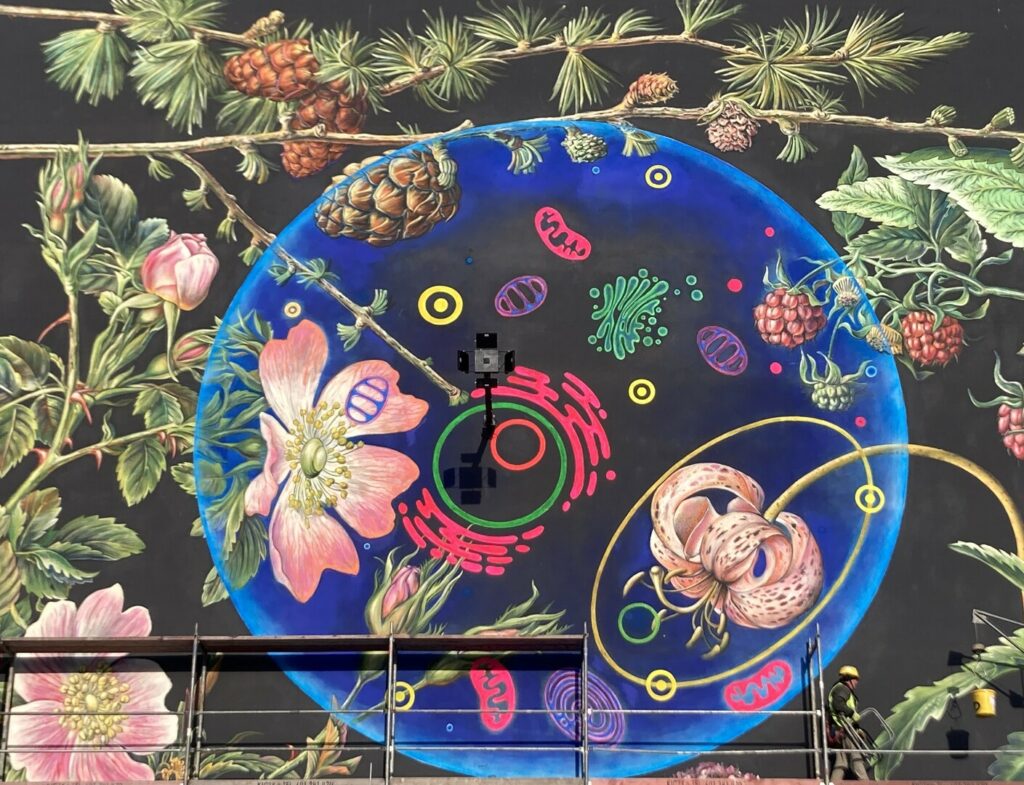It goes without saying that art enhances the attractiveness of urban landscape. But, apart from providing pleasant and sometimes inspiring images that we pass along the way, does it contribute anything else to our lives?
In the past, in cities with a centrally located market, a network of streets and squares surrounded by moats, designating a safe and familiar space was much simpler. Today, as cities grow considerably larger, we need other ways to learn navigate our surroundings and become comfortable in the place where we live. Especially when we change our place of residence and start to instinctively look for distinctive signs around us, which become our individual visual information system that seamlesly leads us to places we consider our own. This space is often delineated not only by buildings but also by elements of art – sculptures, art installations or street art murals and graffiti.
However, art in public space is not just part of an urban navigation system or a purely decorative element. It is increasingly becoming a way of expressing socially important topics or an element of the architecture and part of identity of a place. For artists creating in this space, the building usually serves only as a framework or background, and open space offers freedom to create works integrated with the architecture, landscape and ambience of the place. The various forms of urban art can be merely an accent in an urban enclosure, carry a historical or cultural message, provoke and intrigue, but they can also become a permanent symbol of a place, such as the Neptune sculpture in Gdansk, Wroclaw’s dwarves, the Mermaid in Copenhagen and Warsaw or Manneken Pis in Brussels.
Artistic housing estates
The potential of art is also increasingly recognized by developers and investors of residential buildings, who engage artists to co-create projects matching the architecture of housing estates and their surroundings. After all, who wouldn’t want to come home every day to experience beauty right at the entrance? The new Resi4Rent housing estates resemble a collection of artworks, each dedicated to a specific place and created through cooperation with local artists working with different techniques and styles. The first artistic Resi4Rent project was created in a Warsaw at 82 Woronicza St. The entrance to the building was glazed, and a colorful mosaic was laid in the lobby and on the facade, by artist Krystyna Kaszuba-Wacławek, who specializes in ceramic compositions made of individually designed and fired tiles. The mosaic features colors corresponding to nature – various shades of green and natural shades of brown.

Live by a vertical garden in Krakow
A green work of art also adorns the Resi4Rent building located at Krakow’s Blonie Park. It is a real vertical garden covering a 200-meter wall of the building and part of the lobby. The beautiful, year-round green facade not only creates a unique atmosphere, but also serves as a natural insulator – protecting against unpleasant heat in the summer and against wind and cold in the winter. It also makes up a friendly ecosphere for birds, filters out air pollutants, and merely one look at the lush greenery has a calming effect on everybody walking around. Live by a vertical garden in Krakow and enjoy the benefits of lush greenery.

Sgraffito in a subscription model in Mokotów
If you associate wall painting only with Renaissance frescoes and church interiors, it’s time to learn about sgraffito. It’s a decorative technique that involves applying several different-colored layers of plaster and then creating a drawing by skillfully scraping and exposing layers of underpainting so as to produce a multicolored and multidimensional image. This is one of the most durable techniques of monumental painting known since ancient times. Houses, palaces and decorative facades painted using this technique can be found in almost every part of of Europe and… this technique is also featured in the Resi4Rent housing estate in Warsaw’s Mokotow district. Sgrafitto was created by Marcin Boguslawski, whose works decorate, among others, the Main Library of the Mazowieckie Voivodeship, the medieval tower at the Marszałek Małachowski High School in Płock and the Andrzej Wajda Film Culture Center in Warsaw. How the project for Resi4Rent was created, what guided its creator and how art can affect the aesthetics, ambience of a place and good atmosphere is best told by the artist himself. Would you like to have an apartment featuring sgrafitto in a subscription model? See what we have for you.
Live in the “botanical housing estate” in Wroclaw
Murals (not to be confused with graffiti) are also a form of large-format wall painting. However, unlike the communist-era advertising murals of PKO or Pewex, the contemporary ones rather tell a story and present attempt to establish a dialogue with the viewer and the surrounding space. This is also the case with the mural being created at the Resi4Rent Wroclaw housing estate, covering an area of about 760 sqm, which is the largest work of its kind in Lower Silesia. Its author is Olaf Cirut, a graduate of painting at the Academy of Fine Arts in Krakow – an artist known for his mural at Krakow’s Mogilskie traffic circle featuring a palette various colours, the dragon square in Park Decius or the mural decorating the facade of the National Center for Nuclear Research in Świerk.
“The plants that are the central feature of the Botanica mural come, inter alia, from Herbarium horti botanici Vratislaviensis and the Silesian Herbarium. The mural refers to traditions known, among others, from the Linnaeus era or Maria Sybil Merian’s compositions, and resembles a card from old botanical atlases, and at the same time draws from Dutch painting with a contrasting representation of plants emerging from a dark background. All the plants on the mural were selected according to a principle describing the natural world through its magical and utilitarian functions. Let’s take for instance the larch tree, which was worshipped by ancient Slavic people and which symbolizes vital forces and wards off “evil forces” and which – at the same time – is used for the production of Venetian turpentine – a noble additive to varnishes allowing to obtain extraordinary painting effects that can be found, among others, in the works of Italian and Flemish masters, such as Titian and Rubens,” says Olaf Cirut.
The composition features symbolic plants such as the wild rose, whose five-petaled blossoms were referred to Aristotle’s five elements (ether, fire, air, water, earth), or wild raspberry, garden dill, nettle and stonecrop, which are more common yet firmly rooted in Polish culture. They become elements of the story about the natural world, making us reflect on what we can do to preserve its rightful place in our lives. The full story of the plants and references to tradition, culture and even language told by this unusual painting, can also be explored by scanning the QR code on the facade of the building. If you want to be surrounded by nature every day, chose an apartment in the “botanical housing estate” in Wroclaw.

The center of the composition features a synthetic plant cell that is part of a contemporary story about biology. The luminescent paints thanks to which this motif absorbs energy from light during the day, transform the character of the composition at night, by making it emanate color evoking the fluorescence of chlorophyll, a pigment found in plants and algae that allows photosynthesis – one of the most important biochemical transformations on Earth that produces oxygen. Based on the fluorescence data collected by a spectrometer aboard Japan’s GOSAT satellite, NASA biologists are creating chlorophyll fluorescence maps thanks to which it is possible to track changes affecting plants from space – and collect information about droughts, diseases and dozens of other phenomena affecting their growth and well-being.
Art has always eluded patterns. Thanks to the involvement of artists, Resi4Rent’s housing estates and subscription apartments are becoming an inspiration for original works, a place to display them and a part of the local landscape. Want to learn more about this unusual art collection? We invite you to visit Resi4Rent. And soon we will share more urban art at its best!